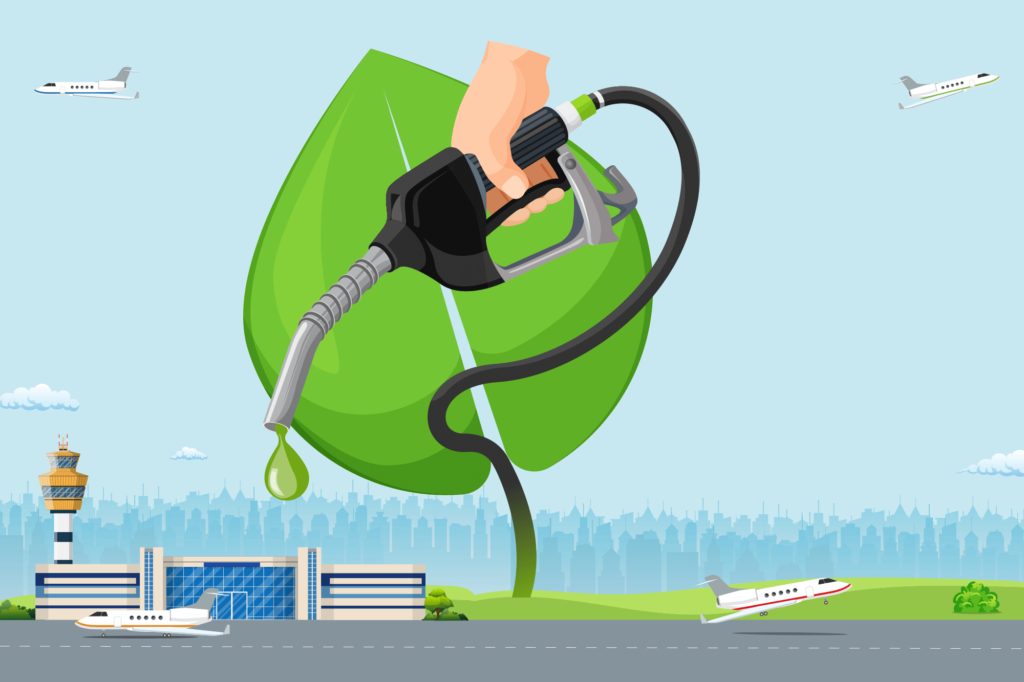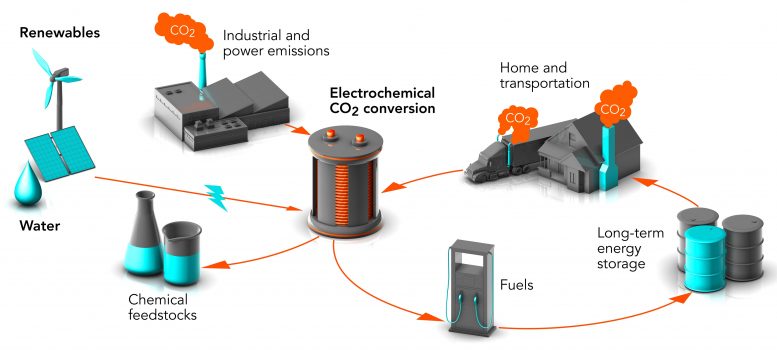Researchers have developed an efficient concept to turn carbon dioxide into clean, sustainable fuels, without any unwanted by-products or waste.
The researchers, from the University of Cambridge, have previously shown that biological catalysts, or enzymes, can produce fuels cleanly using renewable energy sources, but at low efficiency.
Their latest research has improved fuel production efficiency by 18 times in a laboratory setting, demonstrating that polluting carbon emissions can be turned into green fuels efficiently without any wasted energy
The results are reported in two related papers in Nature Chemistry and Proceedings of the National Academy of Sciences.
Most methods for converting CO2 into fuel produce unwanted by-products such as hydrogen. Scientists can alter the chemical conditions to minimize hydrogen production, but this also reduces the performance for CO2 conversion: so cleaner fuel can be produced, but at the cost of efficiency.
The Cambridge-developed proof of concept relies on enzymes isolated from bacteria to power the chemical reactions which convert CO2 into fuel, a process called electrolysis. Enzymes are more efficient than other catalysts, such as gold, but they are highly sensitive to their local chemical environment. If the local environment isn’t exactly right, the enzymes fall apart and the chemical reactions are slow.
- The researchers used computational methods to design a system to improve the electrolysis of CO2. Using the enzyme-based system, the level of fuel production increased by 18 times compared to the current benchmark solution.
Enzymes have evolved over millions of years to be extremely efficient and selective, and they’re great for fuel-production because there aren’t any unwanted by-products.
However, enzyme sensitivity throws up a different set of challenges. Their method accounts for this sensitivity, so that the local environment is adjusted to match the enzyme’s ideal working conditions.”

To improve the local environment further, the team showed how two enzymes can work together, one producing fuel and the other controlling the environment. They found that by adding another enzyme, it sped up the reactions, both increasing efficiency and reducing unwanted by-products.
“We ended up with just the fuel we wanted, with no side-products and only marginal energy losses, producing clean fuels at maximum efficiency”, said Dr. Sam Cobb, first author of the Nature Chemistry paper. “By taking our inspiration from biology, it will help us develop better synthetic catalyst systems, which is what we’ll need if we’re going to deploy CO2 electrolysis at a large scale.”
Electrolysis has a big part to play in reducing carbon emissions. Instead of capturing and storing CO2, which is incredibly energy-intensive, a new concept to capture carbon and make something useful from it in an energy-efficient way have been demonstrated.
The researchers say that the secret to more efficient CO2 electrolysis lies in the catalysts. There have been big improvements in the development of synthetic catalysts in recent years, but they still fall short of the enzymes used in this work.
Once you manage to make better catalysts, many of the problems with CO2 electrolysis just disappear. “We’re showing the scientific community that once we can produce catalysts of the future, we’ll be able to do away with many of the compromises currently being made, since what we learn from enzymes can be transferred to synthetic catalysts”, said Cobb.
“In future we want to use what we have learned to tackle some challenging problems that the current state-of-the-art catalysts struggle with, such as using CO2 straight from air as these are conditions where the properties of enzymes as ideal catalysts can really shine,” said Cobb.
Erwin Reisner is a Fellow of St John’s College, Cambridge. Sam Cobb is a Research Fellow of Darwin College, Cambridge. Esther Edwardes Moore completed her PhD with Corpus Christi College, Cambridge. The research was supported in part by the European Research Council, the Leverhulme Trust, and the Engineering and Physical Sciences Research Council.

